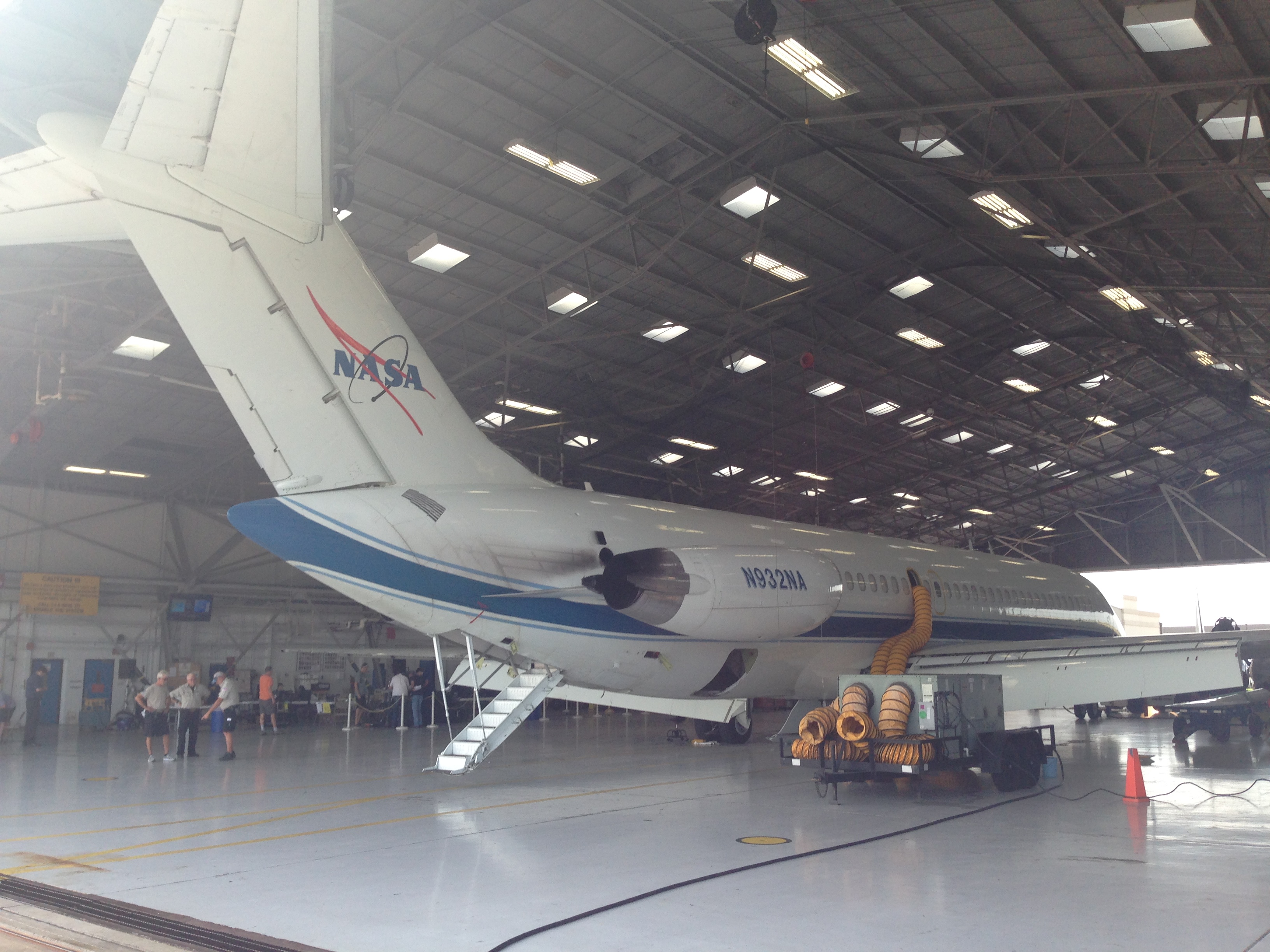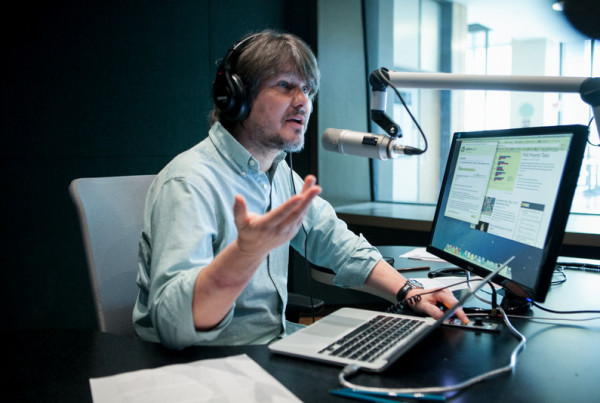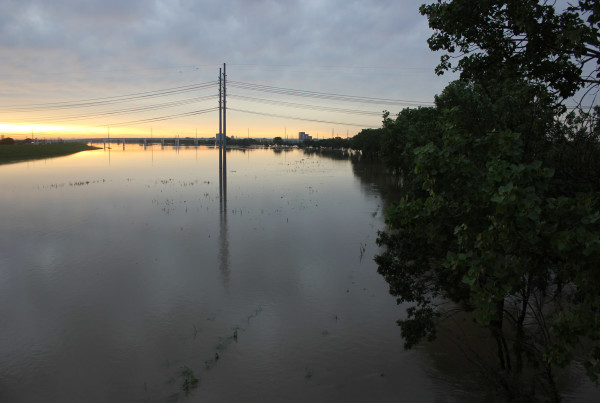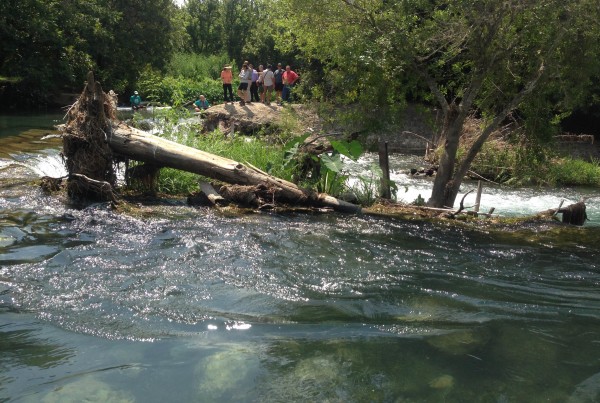According to the folks at NASA, mankind’s first journey to Mars is likely to happen in the 2030’s. A big part of that push to put humankind on a second planet is happening here in Texas, which has a huge space-tech infrastructure. Among the many challenges posed by the long journey – what to do about astronaut’s vision – literally their eyesight. Doctors have discovered some troubling evidence about what happens to the human eye after long periods in space. Indeed, as Lauren Silverman of KERA North Texas discovered, they’re already working intensely on eyes, high in the skies.
Imagine you’re flying in a plane, high above the Gulf of Mexico — and then you start to fall. Eight thousand feet in just 30 seconds.
Next, that plane starts climbing back up, before making a plunge again.
“And we do that 40 times,” says Dr. Benjamin Levine, Professor of Internal Medicine at UT Southwestern.
On the flight last week, Levine monitored the parabola-shaped trajectory of the NASA plane from a safe distance. The goal? Figure out what’s behind a vision problem that affects astronauts.
“One of the biggest medical problems in the last decade of manned space flight has been the understanding that astronauts on the International Space Station are losing their vision,” Levine explains. “And when they’ve come back down to Earth, it looks for all the world like the pressure inside the brain is too high.”
This hypothesis, that high pressure inside the brain is damaging the eyes, is what Levine was testing. Instead of sending people to the International Space Station, he’s using those fast swoops and dives of the plane as a chance to replicate the zero gravity experienced in space.
And there’s another big difference between these test subjects and the astronauts who have the vision problem.
These voyagers were all cancer survivors.
Why? Because these cancer survivors have ports in their brains – ports once used to deliver chemotherapy – that now make testing the pressure inside their heads easier.
Trent Barton, a lymphoma survivor from Dallas, went on the wild trip high above the Texas-Mexico border.
“I enjoyed each and every rotation we did,” he said. “That was a lot of gadgets on me.”
Most important for this research, he had a needle in that port in his head monitoring the pressure in the fluid surrounding his brain.
Remember, they’re testing the hypothesis that pressure inside the brain at zero gravity is so high it damages the eyes.
It turns out the main idea was wrong.
Levine says space flight doesn’t cause pressure to be much higher than it is when you or I are standing up. But it is a little higher.
“So, we now think this mild but persistent pressure may be the thing that’s stimulating remodeling the eye and causing the visual impairment,” Levine says.
See, unlike us, astronauts never get to rest their brains in lower pressure. As strange as it sounds, we earthlings have lower pressure most of the day when we’re standing – the blood is being pulled to our feet by gravity and the pressure on our brain is lower. Standing or lying down makes no difference in zero gravity. So researchers like Levine need to figure out a way to give these astronaut brains a rest.
“We’ve been working with Under Armour, the garment company,” Levine says, “to come up with a soft but comfortable — almost like a sleeping sack or pair of trousers — that you can put on at night, hook up to a vacuum cleaner, suck the blood and fluid into the feet and unload the heart and the brain while your sleeping.”
That might be just enough to lower the pressure slightly and give the brain a rest.
“And that might prevent the remodeling behind the eye,” Levine says.
OK, this is all cool and high-tech, but why does it matter to the rest of us?
There are two reasons.
The first, Levine says, is we don’t want astronauts to land on Mars and be blind.
Fair enough. Also, Levine says there are people on Earth who suffer from high pressure in the head (also known as intracranial hypertension).
“And perhaps developing a sleep sack or pair of trousers that reduce the pressure at night may completely relive chronic headaches,” Levine says.
Levine is also interested in patients who’ve suffered a traumatic brain injury and have slightly elevated brain pressure.
Dallas cancer survivor Trent Barton says he’s thrilled to be a part of any solution.
“That’s what we’re called to do,” Barton says. “To help each other, and move each person forward for all mankind.”
One bumpy ride at a time.
The National Space Biomedical Research Institute (NSBRI) funded the research.












